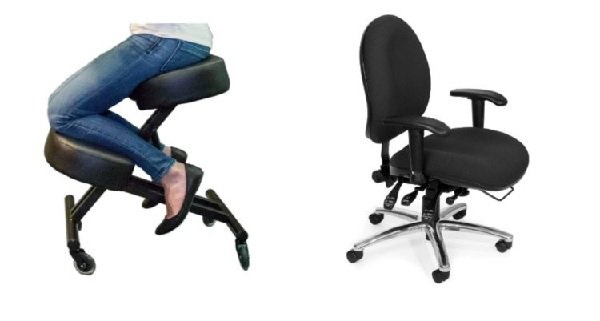How Office Chairs Can Help Prevent Chronic Pain at Work

In today’s modern workspace, the importance of quality office furniture cannot be overstated. Among the array of office furniture options available, office chairs stand out as a crucial component in ensuring both comfort and health. With many employees spending hours seated at their desks, the design and ergonomics of office chairs can play a significant role in preventing chronic pain and promoting overall well-being.
Understanding the Impact of Office Chairs on Health
Office chairs are more than just a place to sit; they are a central element of workplace ergonomics. Poorly designed chairs can contribute to a range of musculoskeletal issues, including back pain, neck strain, and even repetitive strain injuries. When an office chair does not provide adequate support or promote good posture, it can exacerbate these problems and lead to chronic pain over time.
Chronic pain is a persistent discomfort that lasts for months or even years. It often results from poor posture and prolonged periods of sitting, which can place undue stress on the spine and surrounding muscles. A well-designed office chair can mitigate these risks by offering proper lumbar support, adjustability, and cushioning that conforms to the body’s natural curves.
Key Features of Ergonomic Office Chairs
Lumbar Support
One of the most critical features in an office chair is lumbar support. The lumbar region, or lower back, is particularly vulnerable to strain when sitting for long periods. An ergonomic chair with adjustable lumbar support can help maintain the natural curve of the spine and reduce pressure on the lower back. This support helps prevent the development of lower back pain and can alleviate existing discomfort.
Adjustability
Office chairs that offer a range of adjustability options can accommodate different body types and preferences. Key adjustments to look for include seat height, seat depth, backrest angle, and armrest height. By customizing these settings, users can achieve a more comfortable and supportive seating position that promotes good posture. Proper adjustability ensures that the chair fits the user’s body, rather than forcing the user to adapt to the chair’s limitations.
Seat Cushioning
Comfort is another essential factor in preventing chronic pain. High-quality seat cushioning can help distribute body weight evenly and reduce pressure points. A well-cushioned seat can prevent discomfort and numbness in the legs and buttocks, which can occur when sitting on a hard or poorly padded chair. Additionally, the cushioning material should be breathable to maintain a comfortable temperature and reduce sweating during long periods of use.
Backrest and Recline Function
An adjustable backrest that can tilt and lock in various positions allows users to shift their weight and change their posture throughout the day. A reclining function can help alleviate pressure on the spine and promote relaxation. This feature encourages users to take periodic breaks from a static position, which can prevent muscle stiffness and fatigue.
The Role of Office Chairs in Preventing Repetitive Strain Injuries
Repetitive strain injuries (RSIs) result from repetitive movements or prolonged periods of strain on specific body parts. Office workers are particularly susceptible to RSIs, such as carpal tunnel syndrome or tendinitis, due to repetitive typing and mouse use. While the primary focus of an office chair is to support the back, a well-designed chair can also contribute to the prevention of RSIs by encouraging proper ergonomic alignment.
For example, an adjustable chair that allows users to position their arms comfortably at their desk can help reduce strain on the shoulders and wrists. By maintaining an ergonomic posture, users can minimize the risk of developing RSIs and reduce the strain on their upper body.
Additional Ergonomic Considerations
While the office chair plays a significant role in preventing chronic pain, it is essential to consider other aspects of the workspace to create a comprehensive ergonomic environment. Proper desk height, monitor positioning, and keyboard placement all contribute to overall comfort and health.
Desk Height
The height of the desk should be adjustable to ensure that the user’s arms are at a comfortable angle while typing. Ideally, the elbows should be at a 90-degree angle or slightly obtuse, with the wrists in a neutral position. This arrangement helps prevent strain on the shoulders and wrists.
Monitor Positioning
The monitor should be positioned at eye level to reduce neck strain. The top of the screen should be approximately at or just below eye level, and the monitor should be about an arm’s length away. This setup helps maintain proper head and neck alignment.
Keyboard Placement
The keyboard should be positioned so that the user’s hands are level with their elbows, and the wrists are in a neutral position. A keyboard tray with adjustable height and tilt can help achieve the optimal placement and reduce strain on the wrists.
The Benefits of Investing in Quality Office Chairs
Investing in high-quality office chairs is not just about enhancing comfort; it’s a proactive approach to safeguarding employees’ health and well-being. By providing ergonomic chairs that support good posture and reduce strain, employers can contribute to a healthier and more productive workforce. Reduced pain and discomfort lead to fewer sick days, improved focus, and overall better job satisfaction.
Furthermore, employees who are comfortable and well-supported are more likely to experience increased productivity and creativity. A supportive work environment fosters a positive atmosphere and helps employees perform at their best.
Final Thoughts
In summary, office chairs play a pivotal role in preventing chronic pain and promoting overall well-being in the workplace. By selecting chairs with key ergonomic features such as lumbar support, adjustability, and cushioning, individuals can significantly reduce the risk of developing chronic pain. Additionally, considering other ergonomic factors in the workspace will contribute to a healthier and more comfortable work environment.
Investing in quality office furniture is not just a matter of comfort but a critical aspect of maintaining long-term health and productivity. As workplaces continue to evolve, prioritizing ergonomics will ensure that employees remain healthy, happy, and engaged in their work.



